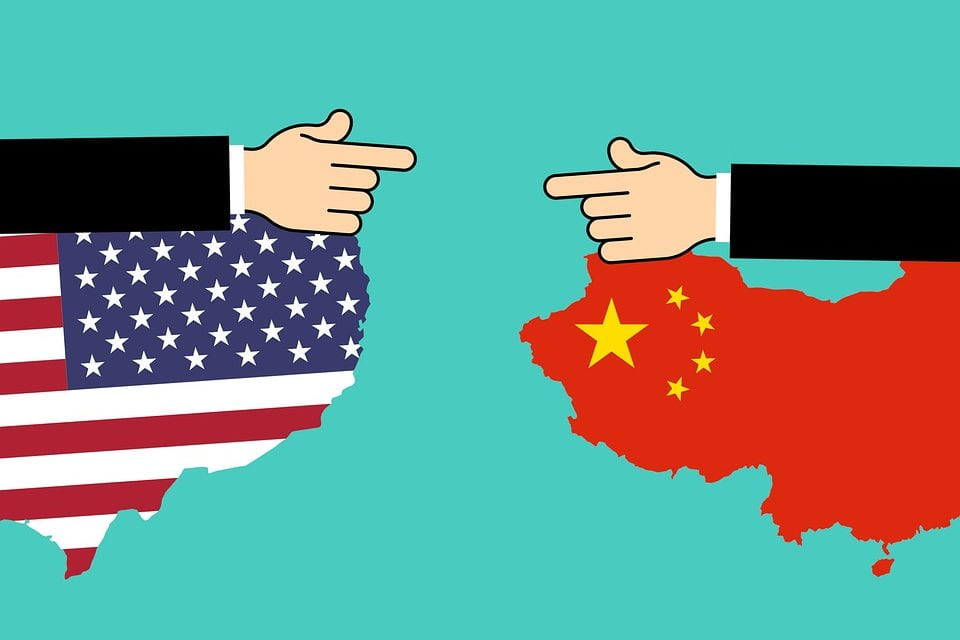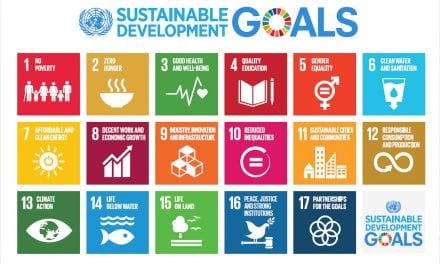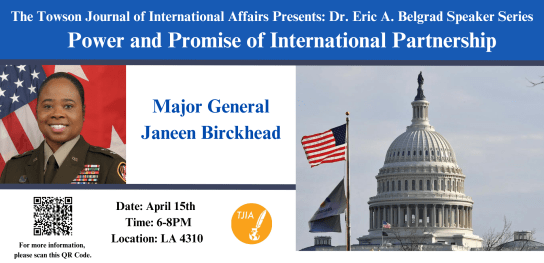The United States and China are, respectively, the two largest economies in the world. Accounting for roughly 15.2% of global gross domestic product (GDP), the United States boasts a GDP of $19.39 trillion as of 2018, with China at $14.3 trillion GDP.[1] However, since China entered the World Trade Organization (WTO) on December 11th, 2001, the two economies have experienced tremendous growth together. This relationship is substantiated by a positive correlation between the two countries’ domestic growth. During periods of economic well-being, both countries have grown considerably. During periods of recession or economic hardship, such as the 2008 financial crisis in the United States, both economies fell sharply.[2] Given this correlation, it is clear that the two cannot continue to effectively grow independently of one another. In spite of this, on September 1st, 2019, the United States imposed a preliminary round of tariffs on Chinese imports, signaling the start of a controversial trade war.
This codependence is explicitly recognized in the most recent trade agreement, the “Phase One Deal”, where it is stated that “it is in the interests of both countries that trade grow and that there is adherence to international norms so as to promote market-based outcomes.”[3] While maintaining equitable, mutually beneficial trade may be the goal of this trade agreement, the loss of manufacturing jobs in the United States, the domestic impact those losses have caused, the political direction of the Chinese government, and, of course, unfair trade practices, are what sparked it. The acknowledgment of the countries’ symbiotic relationship is not meant to insinuate that the renegotiation of terms or a jeopardization of the relationship is unjustifiable. Rather, it is a recognition of the tacit, undeniable influence the two hold over one another, an influence that demands recognition when entering into any sort of negotiations. Nonetheless, President Trump has justifiably made China the main focus of his foreign economic policy, engaging in risky, yet necessary, business negotiations with his fellow world superpower.[4]
Timeline
Donald Trump’s election to the presidency changed the nature of our foreign policy towards China. On February 7th, 2018, following months of deliberation regarding economic relations, President Trump’s “Global Safeguard Tariffs” went into effect, and thus, the trade war began.[5] While these two nations are undoubtedly reliant on one another, this statement does not begin to adequately represent the complexity of the relationship. While economic interdependence is indeed mutually beneficial, the many instances of unfair trade or malpractice by China are what drove the United States to initiate the trade war. One such example is the theft of U.S. technology and intellectual property. According to some reports, “Chinese IP theft has cost the United States $225 billion to $600 billion a year.”[6]
President Trump’s initial implementation of “Global Safeguard Tariffs” was only the first step towards renegotiating trade with China. The Global Safeguard Tariffs introduced a 30% tax on solar panel imports, worth about $8.5 billion, and a 20% tax on washing machine imports, worth roughly $1.8 billion.[7] In response, China imposed tariffs totaling about $3 billion on 128 U.S. imports. Since that time, tariffs from both nations have drastically increased. At present, the United States’ actionable tariffs culminate to a total of $550 billion. In turn, China has applied tariffs totaling a comparatively small $185 billion on U.S. goods. In addition to the tariffs, President Trump pursued legal action by filing a WTO case against China for discriminatory licensing practices.[8]
Has the Trade-War Been Successful?
Definitively determining whether a country has wholly benefitted from these negotiations is difficult when taking all factors into consideration. For example, a country as a whole may be better off, while individual sectors of the economy suffer desperately. Similarly, an individual politician, such as Donald Trump or Xi Jinping, may ultimately gain or lose favor with key constituents regardless of overall trade outcomes. As such, involved actors cannot approach the situation through a zero-sum mentality, but rather, must aspire to make trade as seamless as possible, while remaining beneficial for all participants. While the gross total of the tariffs is important, their nature is as well. The total tariffs by the United States are larger in number, however, it seems that the areas of industry targeted by China, though lesser in magnitude, have been more impactful. For example, the tariffs placed on the United States have devastated the agricultural sector, causing major contention domestically.[9] With the initial imposition of these tariffs, China had gained the upper hand. China had targeted many niche sectors of United States agriculture, but the most successful by far was soybeans, which remains the top agricultural export by the United States. The tariff on soybeans took a major toll on businesses, 97% of which are family-owned, while simultaneously creating political tension among Trump’s key constituents.[10]
Thus far, the discussion has largely been focused on the tariffs themselves. Examples include specific tariffs, how the United States and China were affected by them, or how each country retaliated in turn. However, tariffs are not meant to explicitly address the trade imbalance, save the United States agricultural and manufacturing sector, or stop intellectual property theft. Rather, for the United States, they were a means of forcing China to renegotiate terms of broader trade agreements. In order to fix implicit, structural obstacles to trade between the U.S. and China, the two must first recognize there is an issue, be obligated to negotiate terms of correcting it, and eventually reach a point of reconciliation. Though there have been numerous advances and concessions, all with varying success, the most recent truce, described as the “Phase One Deal”, is most important in analyzing where the two nations currently stand.[11]
The major points of the phase-one deal are as follows: 1) The United States has agreed to roughly halve tariffs imposed on Chinese exports. 2) China has agreed to boost imports from the United States by $200 billion in the next two years, higher than the record $176 billion of U.S. imports in 2017. 3) China will ensure stronger legal protections for intellectual property.[12] Breaking down these individual agreements allows for a clearer picture of where the two parties are focusing their efforts, as well as the tangible impact of the agreements, as opposed to their face value.
First, The United States is significantly reducing tariffs on Chinese exports. Even after cutting tariffs in half, the United States remains in an advantageous position on this front. A 25% tariff on $250 billion worth of Chinese goods remains unchanged, a $120 billion dollar tariff imposed on September 1st will be cut in half, and $160 billion worth of tariffs meant to go into effect soon have been suspended indefinitely. China suspended new tariffs as well, but they have also agreed to substantially increase imports from various sectors of U.S. manufacturing.[13] In terms of overall tariffs, it is clear that the United States, with its more robust economy and global influence, has made it clear that they are willing, and capable, of confronting China pertaining to the terms of their economic relationship.
In terms of increased imports, China has made the majority of concessions, agreeing to henceforth import record numbers of U.S. goods.[14] This is important for two reasons. Foremost, it helps reach equilibrium in the trade imbalance between the two nations. However, it sparks many secondary effects as well, the first of which is that it slows China’s movement towards becoming self-sufficient. It is apparent that while China has decreased imports from the United States in response to the trade war, the changes are not significantly different from the overall drop in global manufactured imports.[15] This signals that, at least for the manufacturing sector, the trade war was not the main motivation for China to decrease imports. Rather, it is in line with the long-standing efforts by China to become less reliant on other countries for high-end manufactured goods. The second after-effect of increased exports to China is the benefits afforded to key sectors of the United States economy. China has specifically agreed to import more than $32 billion in additional agricultural products from the U.S. over the next two years. This number exceeds the baseline of $24 billion in agricultural imports pre-trade war.[16] Overall, this is a major success for the United States, the agricultural sector, and Donald Trump’s domestic political standing. Middle American farmers, a key constituent for President Trump, are projected to sell many more crops in the years to come.[17]
In addition to the larger success of the trade war, which spurs a rise in President Trump’s approval among the general population, this facet of the negotiations reingratiates Trump with a key body of voters. This is crucial for President Trump as there is a disparity between the leadership positions here in the United States and those in China. While Donald Trump could very possibly be out of office within the next year, Xi Jinping has been appointed to his position as Chairman of the People’s Republic of China for life. Irrespective of other aspects of Authoritarian leadership, it is undeniably efficient. The continued and unchallenged leadership of Xi Jinping allows for a more cohesive and effective political apparatus than we enjoy in the United States. Even if the phase-one deal is not in the interest of Americans as a whole, the triumph for the agricultural sector may allow President Trump to retain office for a second term, however, if the trade war does not benefit the United States as a whole, it is very likely that it could damage his chances for re-election. The third key takeaway from the phase-one deal, where I see the United States losing the most, is focused on intellectual property.
Intellectual property rights and theft have been a major point of contention between the two countries for some time now. While it is, indeed, a major focus of the phase-one deal, it is less comprehensive than it may seem to the average American. The agreement does include provisions “that deal with private behavior” through Article 1.4. Specifically, the provisions state that China must “enumerate additional acts constituting trade secret misappropriation, especially: (a) electronic intrusions. However, China’s Law Against Unfair Competition already has language that restrains individuals or companies from stealing information through cyber intrusion.”[18] The phrasing, as well as the lack of tangible, measurable outcomes, seem to substantiate a future that fails to enact the intended reform. China did not previously lack standards regarding cyber-intrusion or intellectual property theft, they lacked enforcement. The language of the agreement does nothing to ensure the PRC will uphold the law or prosecute those who commit such a crime.
Furthermore, a disparity in the definition of national espionage has thwarted efforts by the United States to address economic espionage. The Chinese government intends to treat economic espionage the same as all government cyber-intelligence operations. The United States, however, views economic espionage as fundamentally different, undeserving of the same immunity or protections provided to intelligence espionage done in the interest of national security.[19] While this issue has not been resolved, the Phase-One Deal has opened dialogue on the matter, attempting to hold China responsible for cyber-theft, whether committed by a private institution or the PRC itself.
Conclusion
Looking to the future, it seems that the global response to the COVID-19 outbreak, as well as the PRC’s “Belt and Road Initiative” will fundamentally shape the future of the global economic landscape.[20] Both of these will undoubtedly impact China’s ability to stay true to its commitments. The financial burden created by the Belt and Road Initiative, through which China hopes to expand its economic and political influence through development and infrastructure investments across the Asian mainland, is one of the PRC’s top priorities.[21] With the added encumberment accrued both internally and externally from dealing with COVID-19, it is questionable whether China and the United States will be able to stay true to their promises of increased trade. The financial toll of containing and treating the virus, as well as business lost due to shutdowns or quarantine is massive in itself. Furthermore, the external implications, such as the United States’ imposition of new tariffs to punish Beijing for its handling of the coronavirus outbreak, further deteriorate the trade relationships for political reasons.
All aspects being taken into consideration, I think it is clear that the United States has, thus far, gained ground through this trade war. The People’s Republic of China realizes it is in their best interest to maintain good trade relations with the United States in order to continue their rapid economic growth, even if it means making concessions. This statement is, however, largely contingent on China upholding its end of the agreement. Similarly, the United States recognizes the nature of its codependent relationships with China. In the case of international trade, protectionist policy is rarely beneficial. However, given that the United States perceives a long-standing, systemic trade imbalance, passivity is the only path that guarantees the United States will remain in a disadvantageous position. The United States should advance cautiously, balancing the desire for stronger, equitable trade with the avoidance of policy decisions that further deteriorate mutually beneficial trade relationships.
Bibliography
[1] Plecher, H. “United States – Share of Global Gross Domestic Product (GDP) 2024.” Statista, May 27, 2020. https://www.statista.com/statistics/270267/united-states-share-of-global-gross-domestic-product-gdp/.
[2] “What Happened When China Joined the WTO?” Council on Foreign Relations. Council on Foreign Relations, 2020. https://world101.cfr.org/global-era-issues/trade/what-happened-when-china-joined-wto
[3] Staff, Reuters. “What’s in the U.S.-China Phase 1 Trade Deal.” Reuters. Thomson Reuters, January 15, 2020. https://www.reuters.com/article/us-usa-trade-china-details-factbox/whats-in-the-u-s-china-phase-1-trade-deal-idUSKBN1ZE2IF.
[4] Wong, Dorcas, and Alexander Chipman Koty. “The US-China Trade War: A Timeline.” China Briefing News. Dezan Shira & Associates, August 25, 2020. https://www.china-briefing.com/news/the-us-china-trade-war-a-timeline/.
[5] ibid.
[6] Yukon Huang, Jeremy Smith. “China’s Record on Intellectual Property Rights Is Getting Better and Better.” Foreign Policy. Graham Holdings Company, October 16, 2019. https://foreignpolicy.com/2019/10/16/china-intellectual-property-theft-progress/.
[7] Wong and Koty, “The US-China Trade War: A Timeline”
[8] ibid.
[9] Setser, Brad W. “Lessons From Phase One of the Trade War With China.” Council on Foreign Relations. Council on Foreign Relations, January 31, 2020. https://www.cfr.org/blog/lessons-phase-one-trade-war-china.
[10] ibid.
[11] Lester, Simon. “Trump’s ‘Big’ China Trade Deal Has Some Really Big Problems.” The National Interest. The Center for the National Interest, February 23, 2020. https://nationalinterest.org/blog/buzz/trumps-big-china-trade-deal-has-some-really-big-problems-125741?page=0%2C1.
[12] Staff, Reuters, “What’s in the U.S. -China Phase 1 Trade Deal”
[13] ibid.
[14] ibid.
[15] Writers, Staff. “Timeline: U.S. Relations With China 1949–2020.” Council on Foreign Relations. Council on Foreign Relations, 2020. https://www.cfr.org/timeline/us-relations-china.
[16] Staff, Reuters, “What’s in the U.S. -China Phase 1 Trade Deal”
[17] Genoways, Ted. “Perspective | Farmers Voted Heavily for Trump. But His Trade Policies Are Terrible for Them.” The Washington Post. WP Company, April 1, 2019. https://www.washingtonpost.com/news/posteverything/wp/2017/10/24/farmers-voted-heavily-for-trump-but-his-trade-policies-are-terrible-for-them/.
[18] Lester, Simon. “Trump’s ‘Big’ China Trade Deal Has Some Really Big Problems.”
[19] ibid.
[20] Chatzky, Andrew, and James McBride. China’s Massive Belt and Road Initiative, January 28, 2020. https://www.cfr.org/backgrounder/chinas-massive-belt-and-road-initiative.
[21] Kawanami, Takeshi, Issaku Harada, and Alex Fang. “US and China Sign Trade Truce, with Tougher Phase of Talks to Come.” Nikkei Asian Review. Nikkei Asian Review, January 15, 2020. https://asia.nikkei.com/Economy/Trade-war/US-and-China-sign-trade-truce-with-tougher-phase-of-talks-to-come.






